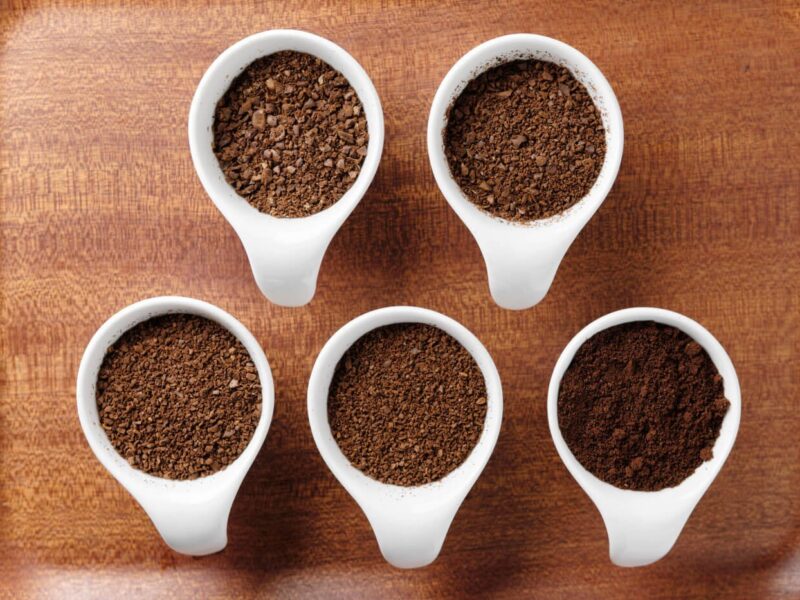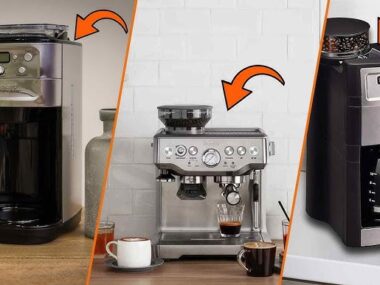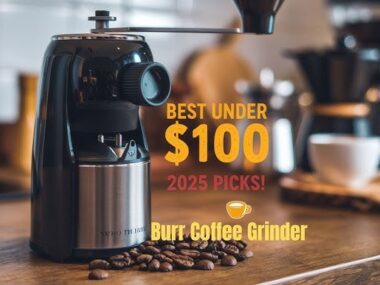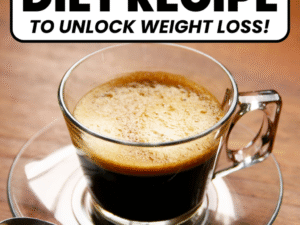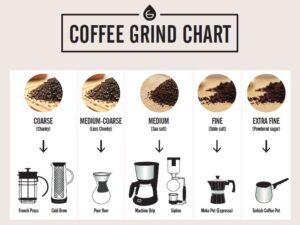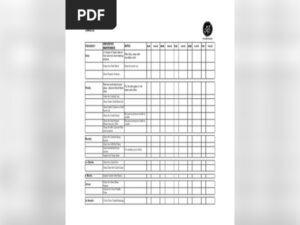Choosing the right grind of coffee for your percolator can make all the difference between a rich, flavorful brew and a bitter, weak cup. If you’ve ever wondered why your coffee doesn’t taste quite right, the grind size might be the missing piece.
You want your morning cup to be smooth and strong, not harsh or watery. You’ll discover exactly what grind works best for your percolator and how it affects the taste. Keep reading to unlock the secret to brewing perfect coffee every time.
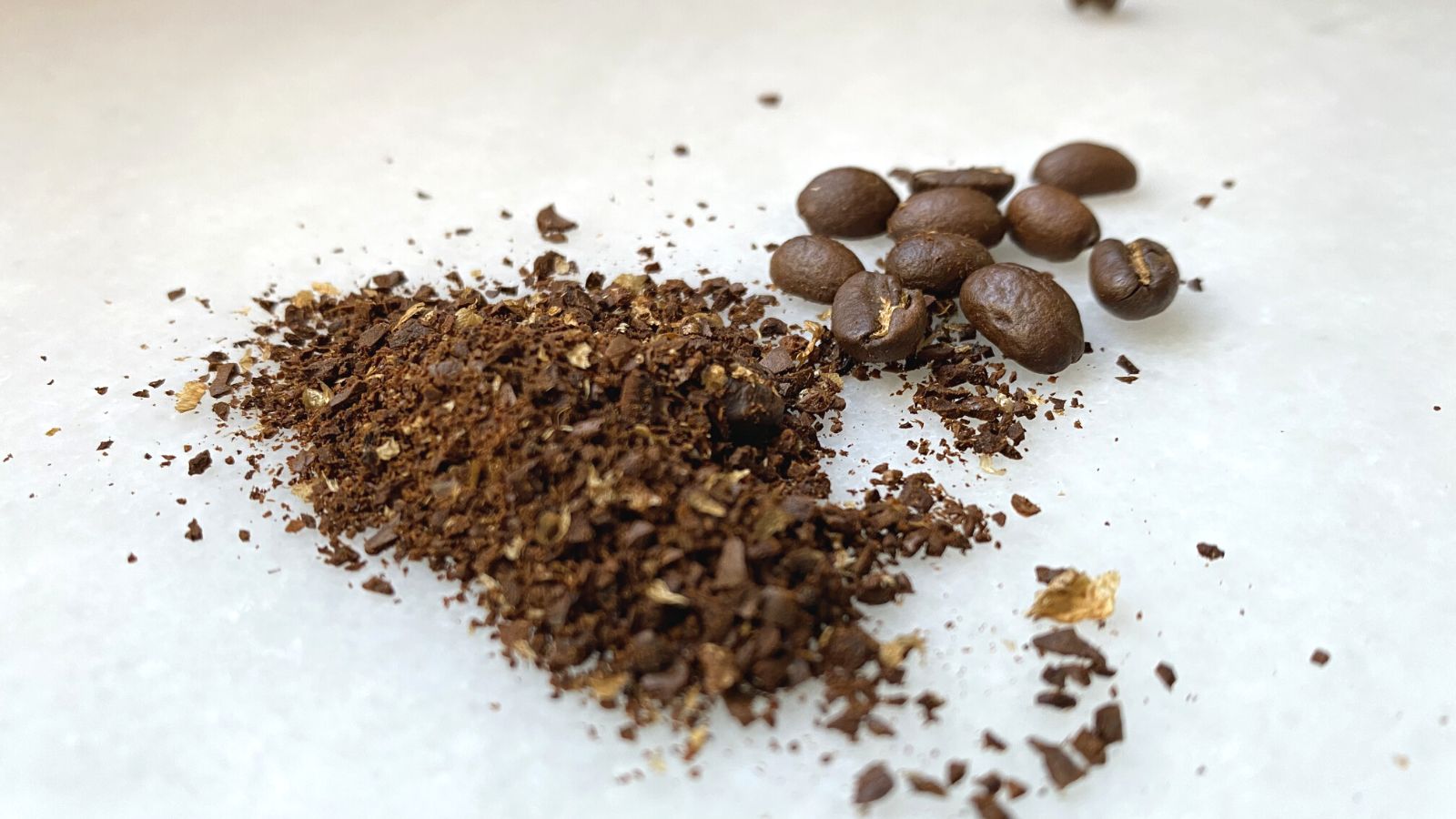
Credit: www.roastycoffee.com
Choosing The Right Grind
Choosing the right grind for your percolator is key to a good cup of coffee. The grind size affects how the water flows through the coffee grounds. It also changes the flavor and strength of the brew. Understanding the difference between coarse and medium grinds helps you get the best taste.
Coarse Vs Medium Grind
A coarse grind looks like small pebbles. It allows water to pass through slowly. This is good for percolators because the water cycles several times. A medium grind is finer and feels like sand. It can make the brew bitter if used in a percolator. Coarse grind is usually better for a smooth cup.
Why Grind Size Matters
Grind size controls how much flavor comes from the coffee. Too fine, and the coffee tastes bitter or burnt. Too coarse, and the coffee tastes weak or watery. The right grind helps balance taste and strength. It also stops coffee grounds from clogging the percolator basket.
Effect On Brew Time
Coarse grinds need more time to brew. Water moves slower through larger particles. Medium or fine grinds brew faster but can over-extract. Over-extracted coffee tastes harsh. Proper grind size helps control the brew time. This keeps the coffee smooth and rich.
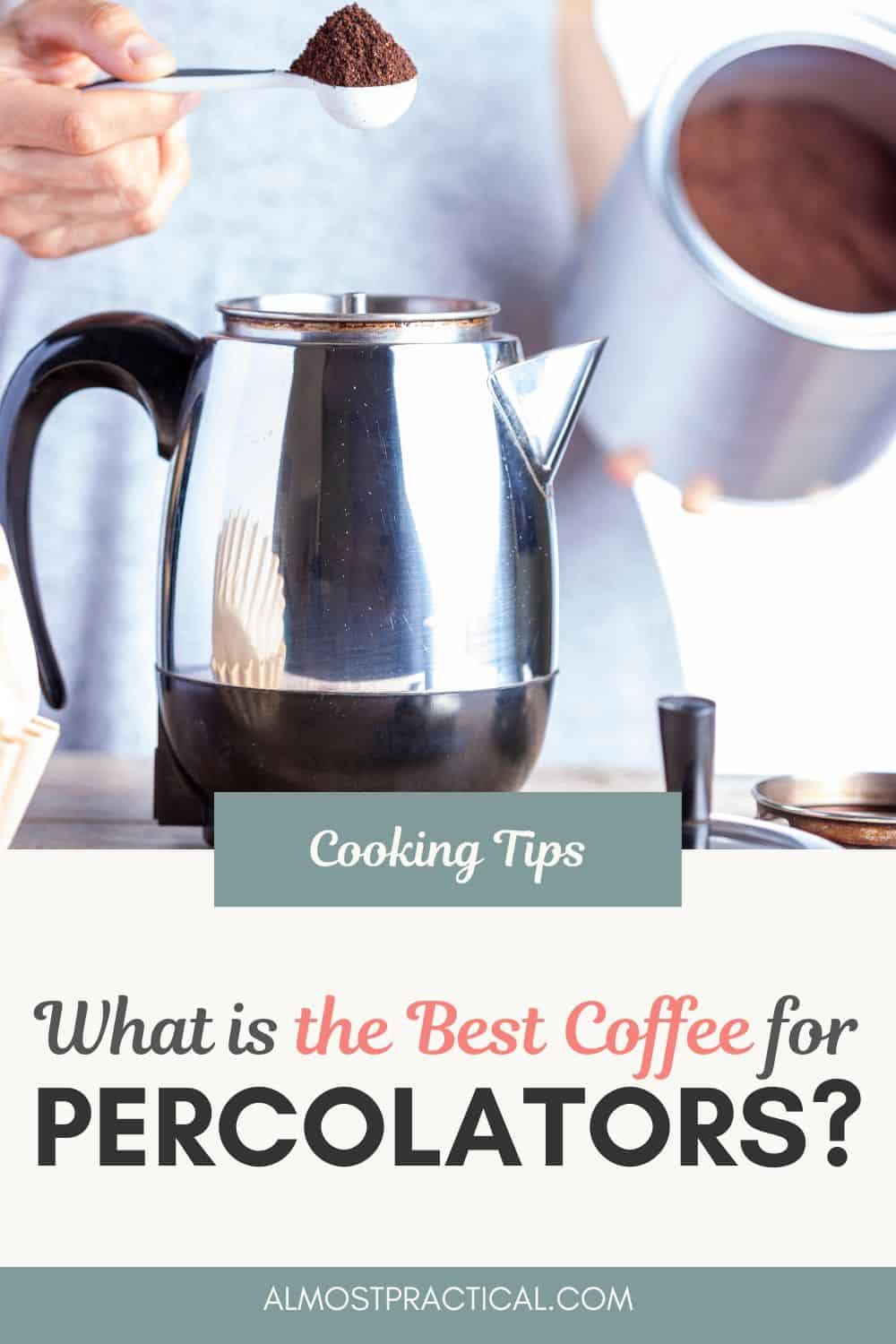
Credit: almostpractical.com
How Percolators Work
Percolators brew coffee by cycling boiling water through coffee grounds repeatedly. This method extracts flavor steadily, producing a rich and bold cup. Understanding how percolators work helps choose the right coffee grind for perfect brewing.
Brewing Process Explained
Water heats at the bottom of the percolator. As it boils, pressure pushes hot water up a tube. The hot water drips over the coffee grounds in the basket. Gravity pulls the water back down to the bottom. This cycle repeats until the coffee reaches the desired strength.
The process depends on time, temperature, and water flow. Each factor affects the coffee’s taste and aroma. Percolators make strong coffee by keeping water in contact with grounds longer.
Impact Of Grind On Extraction
The grind size controls how fast water passes through coffee. Coarse grounds slow extraction and prevent bitter flavors. Fine grounds cause over-extraction, leading to harsh taste and sediment. Medium-coarse grind is best for percolators.
This grind lets water flow evenly while extracting flavor well. It balances strength and smoothness in the cup. Using the right grind improves coffee clarity and reduces bitterness. Choosing proper grind makes percolator coffee enjoyable every time.
Best Grind For Different Percolators
Choosing the right coffee grind is important for brewing with a percolator. Different types of percolators need different grinds. This affects how the water flows and the taste of your coffee. The correct grind helps avoid bitter or weak coffee. Below, find the best grind for popular percolator types.
Stovetop Percolators
Stovetop percolators work best with a coarse grind. This grind looks like sea salt. It allows water to flow freely without clogging the basket. A fine grind makes the coffee bitter and muddy. Coarse grounds help the water extract flavor slowly. This results in a smooth, balanced cup.
Electric Percolators
Electric percolators also need a coarse grind. Their brewing time is usually longer than stovetop models. Coarse grounds prevent over-extraction during this process. Fine coffee can cause clogging and bitter taste here too. Use a consistent coarse grind for even brewing. This delivers the best flavor and aroma.
Grinding Tips For Percolator Coffee
Grinding coffee for a percolator is an important step to get a tasty cup. The grind size affects the flavor and strength of your coffee. Knowing how to grind correctly helps you avoid bitter or weak coffee. Below are some tips to guide your grinding process for the best percolator coffee.
Grinding Fresh Vs Pre-ground
Freshly ground coffee keeps more flavor and aroma. Grind beans just before brewing for the best taste. Pre-ground coffee loses its aroma quickly and can taste stale. It may be convenient but often results in a flat cup. Fresh grinding lets you control the size and freshness better.
Adjusting Grind For Taste
Coarse grind works best for percolators. Fine grounds can cause bitterness and clog the filter. Start with a medium-coarse grind and test your coffee. If it tastes weak, try a slightly finer grind. For bitter coffee, coarsen your grind. Small changes can improve your cup a lot.
Common Mistakes To Avoid
Choosing the right coffee grind for a percolator is key to a great cup. Many people make simple mistakes that ruin the flavor. Understanding these errors helps you avoid bad coffee. Here are the most common mistakes to watch out for.
Using Too Fine Grind
Using a grind that is too fine clogs the percolator basket. Water struggles to pass through, causing uneven brewing. This often results in bitter, harsh coffee. Coarse or medium-coarse grinds work best for percolators. They allow water to flow freely and extract flavor evenly.
Over-extraction Issues
Over-extraction happens when coffee brews too long or with too fine a grind. It pulls out bitter compounds, spoiling the taste. Percolators tend to over-extract if the grind is too fine or brewing time is too long. Use the right grind size and watch the brewing time closely for balanced flavor.
:max_bytes(150000):strip_icc()/CoffeePercolatorPainToClean-dbaec0facd4243a6b2152e1bc1bdefbe.jpg)
Credit: www.seriouseats.com
Enhancing Your Percolator Brew
Enhancing your percolator brew involves more than just choosing the right coffee grind. The quality of water and the cleanliness of your percolator play big roles. These factors affect the taste, aroma, and overall experience of your coffee. Paying attention to them can help you enjoy a richer, smoother cup every time.
Water Quality And Temperature
Good water makes good coffee. Use fresh, clean water for the best flavor. Avoid water with strong tastes or odors. The temperature of the water also matters. Start with cold water and let the percolator heat it evenly. This helps extract the coffee’s full taste without burning it.
Cleaning And Maintenance
Clean your percolator regularly. Old coffee oils and residue can spoil the flavor. Wash all parts with warm, soapy water after each use. Descale the percolator often to remove mineral buildup. This keeps your coffee tasting fresh and your machine working well.
Frequently Asked Questions
What Grind Size Is Best For A Coffee Percolator?
A coarse grind is ideal for coffee percolators. It prevents over-extraction and reduces bitterness. Fine grinds can clog the filter and cause bitterness.
Can I Use Medium Grind Coffee In A Percolator?
Medium grind is not recommended for percolators. It may lead to weak or bitter coffee. Coarse grind ensures better water flow and flavor extraction.
Why Avoid Fine Grind Coffee In A Percolator?
Fine grind clogs the percolator’s filter basket. It causes over-extraction and bitter taste. Coarse grind allows proper water circulation for balanced flavor.
How Does Grind Size Affect Percolator Coffee Taste?
Grind size controls extraction rate in a percolator. Coarse grind produces smooth, balanced coffee. Finer grinds extract too quickly, leading to bitterness.
Conclusion
Choosing the right coffee grind matters a lot for percolator brewing. Coarse grind works best to avoid bitter taste and clogging. It lets water flow smoothly and extracts good flavor. Fine grinds can cause over-extraction and bitterness. Keep your grind consistent for better taste every time.
Remember, a simple coarse grind makes your coffee rich and smooth. Enjoy your perfect cup with the right grind choice.
